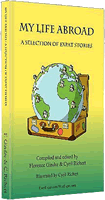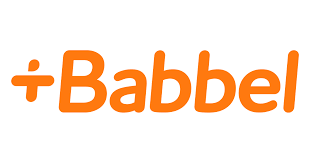What you need to know about the education system in Australia

Australia is a popular study destination for foreign students having some of the best universities in the world. In addition to that, its educational system – starting from early childhood education and ending with tertiary education – is quite flexible and provides many opportunities for domestic and foreign students alike. Read on to find out more about education in Australia.
General Information
Established in 1995, the Australian Qualifications Framework (AQF) is what sets the Australian education system apart from those of other countries. This national policy unifies a total of 10 different levels of education in Australia and links them into one system. This system allows students to move from different educational institutions smoothly and plan their educational journey years ahead.
When it comes to educational differences within the country, there is actually not much variability between education in Queensland, New South Wales, Victoria, Tasmania, South Australia, Western Australia, the Australian Capital Territory, or the Northern Territory. The educational system is divided into four main stages much like in any other country: early childhood education, primary education, secondary education, and tertiary education.
Schooling is compulsory for students aged 6-17 which is similar to laws in other developed countries. Besides public schools, Australia also has Catholic and independent schools with a high overall percentage of religious schools.
The top universities in Australia are referred to as the Group of Eight and include:
- The University of Sydney
- The University of Melbourne
- The University of Queensland
- The University of Western Australia
- The University of New South Wales (UNSW Sydney)
- The Australian National University
- The University of Adelaide
- Monash University
Interestingly, Australia is the third-largest provider of education to international students. It is valued at $19.9 billion (the country's third-largest export) and is expected to reach $33 billion by 2025.
Expensive tuition fees
Despite being a popular study destination for foreign students (particularly at the higher education level), Australia is also known for being expensive. Students will need to spend thousands only in living costs every year and pay even more for tuition:
- Bachelor – AU$20-45 thousand per year
- Master – AU$22-50 thousand per year
- Doctoral – AU$20-42 thousand per year
Some programs can be more expensive than others (e.g. medical or veterinary degrees). The fees are calculated by unit using the credits system. Universities also usually charge a fee for student services and amenities which amounts to a few hundred dollars.
The different steps of the education system
Early Childhood Education (4-5 Years Old)
Before children go to school at the age of 6, they have the option to attend kindergarten and receive early childhood education. It isn't mandatory, but education at such a young age can help children learn the basics, develop social skills, express their creativity, and get ready for primary school.
Kids learn how to read, write, and count among other things, but another benefit is that parents can be certain that their children are taken care of while they are at work. Early childhood education is ideal for helping youngsters get used to a learning environment.
Primary Education (6-11 Years Old)
Provided to children aged 6-11, primary education builds on the skills and knowledge kids start developing during preschool. They improve their literacy, numeracy, and other skills while studying a relatively wide variety of subjects. This is also the stage when students start building a foundation of knowledge they will need for secondary school.
Primary education is mandatory in Australia with educational institutions following the government-approved curriculum. There are no formal exams at this stage of education, but students usually get a lot of homework which helps them develop their self-learning skills that will be valuable later in their educational journey.
Secondary Education (12-18 Years Old)
The next stage is secondary education which is also mandatory in Australia. While most students graduate after completing Year 12, some states allow students to drop out after Year 10 to pursue vocational training and apprenticeship. Much like in primary education, secondary schools follow the government-approved curriculum.
Subjects become more diverse and complex and can range from economics to health and physical education. Years 11 and 12 are called “senior secondary school”. After completing them, students sit the exams and receive the Senior Secondary Certificate of Education.
Tertiary Education (18+ Years Old)
Tertiary education in Australia is the final stage and includes higher education and vocational education and training (VET). Tertiary education isn't mandatory, but a lot of students go on to pursue degrees, diplomas, and certificates. Moreover, many foreign students coming to Australia are usually aiming for higher education.
VET or Vocational Education Training is aimed at students who want to enter a specific job in a specific industry after graduation. Vocational training programs are usually developed by the Australian federal and state governments in partnership with various industry bodies. This is why many courses and programs of such kind give students an opportunity to get practical experience doing the job itself as a part of their educational process.
Vocational training is generally offered by Technical and Further Education (TAFE) institutions which are funded by the government. You can also receive vocational training from adult and community education centers as well as private registered training organizations (RTO). The qualifications students receive upon completion range from certificates to diplomas and advanced diplomas.
Besides vocational education and training, students can get higher education, including:
- Undergraduate – Bachelor's degrees usually require around 3-4 years to complete. It can be the first step before the student pursues further studies or the final stage of their educational journey before they start looking for work.
- Graduate/Post-Graduate – After getting a Bachelor's degree, the student can get a graduate certificate after another 6 months of study or a graduate diploma after 12 months. Such graduate certificates and diplomas are meant to improve expertise in a given area. Students can also pursue Master's (1-2 years) and Doctoral degrees.
Final Words
All in all, the Australian education system is both straightforward and flexible which is why the country is such a popular destination for students from all over the world.
It is a great place to study, though it can be quite expensive, so aspiring students and their parents need to consider different factors before making their final decision.
About the author
Linda Ritter is an experienced freelance writer and blogger interested in writing about technology, social media, work, travel, lifestyle, and current affairs. Linda is also keen on playing the guitar and helping homeless animals.
- My Life Abroad -
A selection of expat stories

"A fun compulsive read!"
J. Matcham, Amazon
"I strongly advise people ready to live abroad to read this book!"
Patrice, Amazon

 French Schools in Australia
French Schools in Australia International Schools in Australia
International Schools in Australia Private Tuition: A Priority Among Expat Families for Their Children
Private Tuition: A Priority Among Expat Families for Their Children Babbel
Babbel A comprehensive guide to house maintenance
A comprehensive guide to house maintenance Australian visa: what solutions are available for migrants?
Australian visa: what solutions are available for migrants?  Why Local Workers Are Choosing Australia to Work Abroad
Why Local Workers Are Choosing Australia to Work Abroad